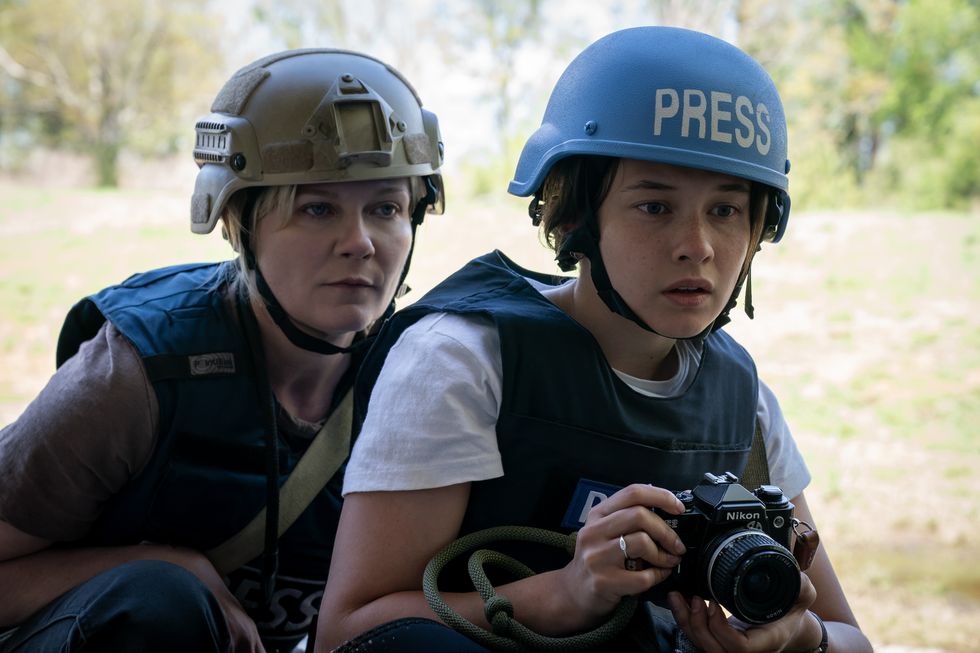DJI Takes Notes From Sony To Make the Ronin 4D Flex w/ ProRes RAW
The gimbal/camera hybrid takes the next step in its evolution.

When the DJI Ronin 4D came out, it was met with either wide-eyed excitement or pure skepticism. The gimbal/camera hybrid was a new take on what a cinema camera could be and allowed cinematographers to get the best of both worlds.
Now, DJI is taking a page from Sony’s playbook and is implementing a tether system to disconnect the gimbal and camera unit from the body that actually does the processing, much like what the Sony Venice Rialto system does.
Here’s why the DJI Ronin 4D Flex is so cool and why filmmakers at all budget levels should pay attention.
The DJI Ronin 4D Flex
The Ronin 4D Flex isn’t really a new camera but an expansion of the system as it already is. By disconnecting the gimbal and camera module, creatives can connect it to the body via a 2-meter-long cable. This feels a bit familiar, doesn't it?

By removing the gimbal and camera module, a small form factor handheld unit is created reminiscent of the original Ronin gimbals but with a built-in camera. But the unit weighs only about 1.8 kg. That’s just under 4 lbs. This is exactly what Sony did with its Venice cinema cameras and the Rialto Extension system, which removed the sensor block from the camera body and created a lightweight unit great for handheld work.

Filmmakers can now put the camera portion of the Ronin 4D into spaces they formerly couldn’t. As long as you have a clearance height of 17 cm, you’re good to go.
According to DJI, the connector cable allows for lossless video transmission up to 8K, along with a monitor signal.

The unit is also fully compatible with the entire Ronin 4D ecosystem, including the LiDAR focus system, the DJI master wheels, and the three-channel follow focus. This makes the Ronin 4D flex a great alternative to a remote head.

The connector module is super versatile and can connect to extension rods or set up on camera rigs using the Pan Axis Quick-Lock (for when you need the oomph of heavy zoom or cinema lenses).
Finally, Apple ProRes RAW can now be added via an activation license key for $979. If you’re curious about the other specs and other internal functions, check out our coverage of the Ronin 4D.
Why This is Important to Filmmakers
The Sony Venice cinema camera will run you north of $50,000, and that’s without the Rialto Extension system. That will be an additional $18,000. If you happen to search for it on Abelcine or B&H, the price isn’t even listed. In film talk, this means: “If you have to ask, you can’t afford it.”
This is what makes the DJI Ronin 4D Flex such an attractive solution. The Ronin 4D costs just $6,799. The Flex extension system will run you an additional $929, and as we said before, the ProRes RAW license is $979. That’s still ten’s of thousands of dollars cheaper, and you also get a gimbal made by one of the industry’s leading manufacturers.
DJI Ronin 4D Flex

- Extendable Gimbal Camera Design
- 2m Gimbal Camera Extension Cable
- Lossless Transmission of High-Speed Image Signals
- 1.8kg Minimum Handheld Weight
- Supports Ronin 4D Hand Grips and Monitors
- Agile Configuration Switches On Set
Sure, you won’t get Sony’s incredible low-light capabilities or its color science, but the DJI Ronin 4D is no slouch either. You could build out your own rig with a dedicated camera and gimbal system, but that’s a lot of parts to source, and it won’t be a jack-of-all-trades system either. You’ll always be buying additional parts to fit an ever-growing list of needs.
What makes us so excited about these new tools from DJI is their affordability. Budget filmmakers can now achieve camera movements only reserved for big-budget productions, not only at a fraction of the cost but with increased efficiency. Being a solo shooter has never looked so easy and affordable.
If you don’t have an eye on this tech for your toolkit, you must not be in the film industry. But what do you think? Would you have this for your next project? Let us know in the comments!
Check out weekly specials, deals, and rebates: Pro Video Gear, Pro Audio Gear, Lighting
Source: DJI
















